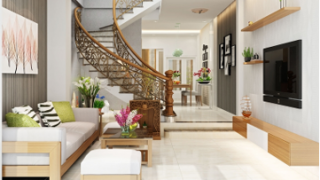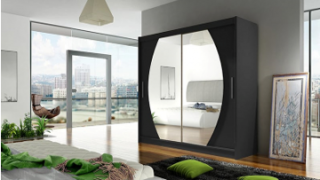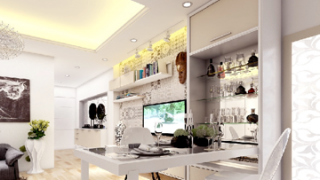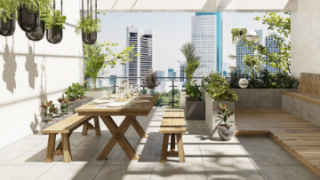The experience of finishing a rough house that homeowners need to know.
Rough construction seems to be a very simple stage in the process of building a house. However, rough construction is an important step to create a perfect and suitable living space for the owner. It affects the future living space of the homeowner as well as determines the total final construction cost of the house. Here is the experience of finishing a rough house to help homeowners get the house they want.
Roughly built house is a housing work that has been built with foundations, underground tanks (if any), load-bearing structural systems including frames, columns, beams, concrete floors, concrete roofs, stairs, surrounding walls and seperation walls,… The rough construction forms the frame for the house according to previously approved design documents and drawings.
Finishing the rough house is the stage done after the rough construction has been completed; it is the final stage to put the project into use. The finishing stage plays a decisive role in the aesthetics and usability of the house.
Experience in finishing rough houses.
- Plastering walls.
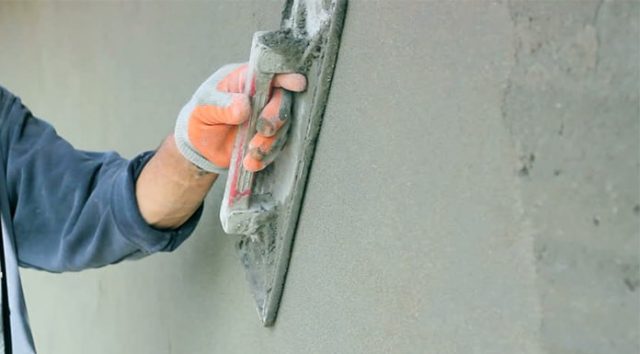
With the newly built wall surface, it must take enough time to dry completely, if the wall is too dry, it is recommended to moisten the wall with clean water.
You should use grinding stone to remove impurities that affect the adhesion of putty layers. Besides, you can grind the wall to create a relative flatness for the wall surface then use sandpaper to roughen the surface and clean the dirt with an air compressor or a clean wet wipe.
Plastering walls must not make small cracks, must be smooth. If in doubt, specialized measuring tools can be used to check for accuracy. In this process, we must check whether the quality of the mortar is good, because good mortar is a condition for the wall to achieve smoothness before painting.
- Flooring
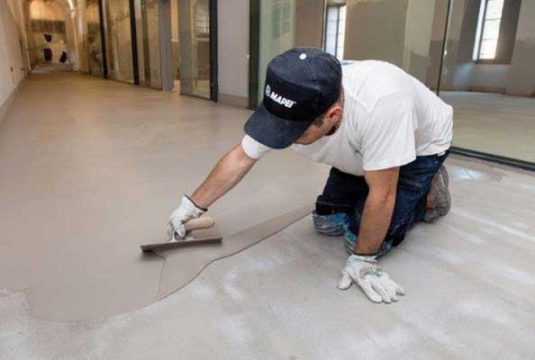
– When the screed is not completely dry (just ajar), the floor should be leveled immediately.
– In case the screed is dried concrete, the concrete surface should be chopped, then brushed and washed before smoothing.
– Surface must be flat and smooth.
- Tiles.
The circuit and alignment of tiles are easy to observe, when detecting errors, you should immediately report to the construction team. Although they are small mistakes, the overall beauty of your house shall be most likely affected.
- Painting the wall.
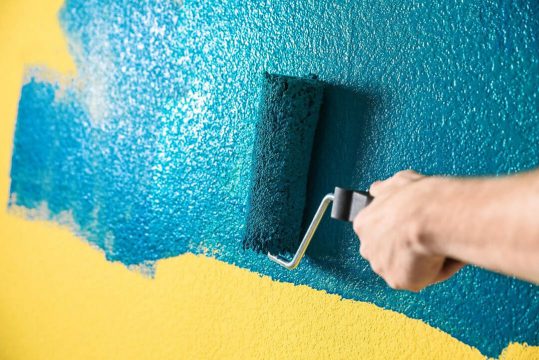
Surfaces for paiting and whitewash must be color even, free of stains and patches. The surface of the paint layer must be glossy, without air bubbles, lumps or cracks. Wall paint: there are two types of paint: water-based paint and oil-based paint.
- Water-based paint: usually not harmful to health and can drain the moisture of the wall to the outside without causing blistering.
- Oil-based paint: commonly used for wood and metal surfaces.
In addition, before painting, you should also note whether the wall has been smoothly plastered, the primer has been carefully painted or not before using color paint. Note: the primer is white paint and should be applied two coats before using the color paint. This will ensure the beauty of the wall.
- Installation of electricity and water.
To ensure the aesthetics and safety of the house, you’d better hire a contractor specializing in the construction of electricity, water and technical systems. Please avoid arbitrarily installing that affects the structure of house and is unsafe for the family during future use.
– The electrical, water supply and drainage system should be designed in the wall, carefully check the connections before installation.
– It is necessary to focus on the safety and sustainability of the system.
– Choose good quality products, reputable brands.
– Do not arrange too many electrical outlets because it will affect the aesthetics of the room.
– Owners should hire professional contractors in the field of electricity and water construction to perform.

- Furniture installation.
With this part, you should have a complete interior design so that the installation can be done conveniently, fast, harmoniously, suitably, economically, avoiding no process and random installation. You should consult an architect because the market for finishing materials is varied, the installation must also be suitable for the area, wall color and in harmony with the architecture. For houses with a narrow area, the interior should not be too fussy, should not use too much furniture, the color should be light to make your space look more airy.
Without experience in finishing rough houses, it is easy to incur a lot of costs during construction, when put into use, it does not guarantee the safety as well as the wishes of the owner. Hopefully the above sharing can help with the process of completing your family’s rough house.


